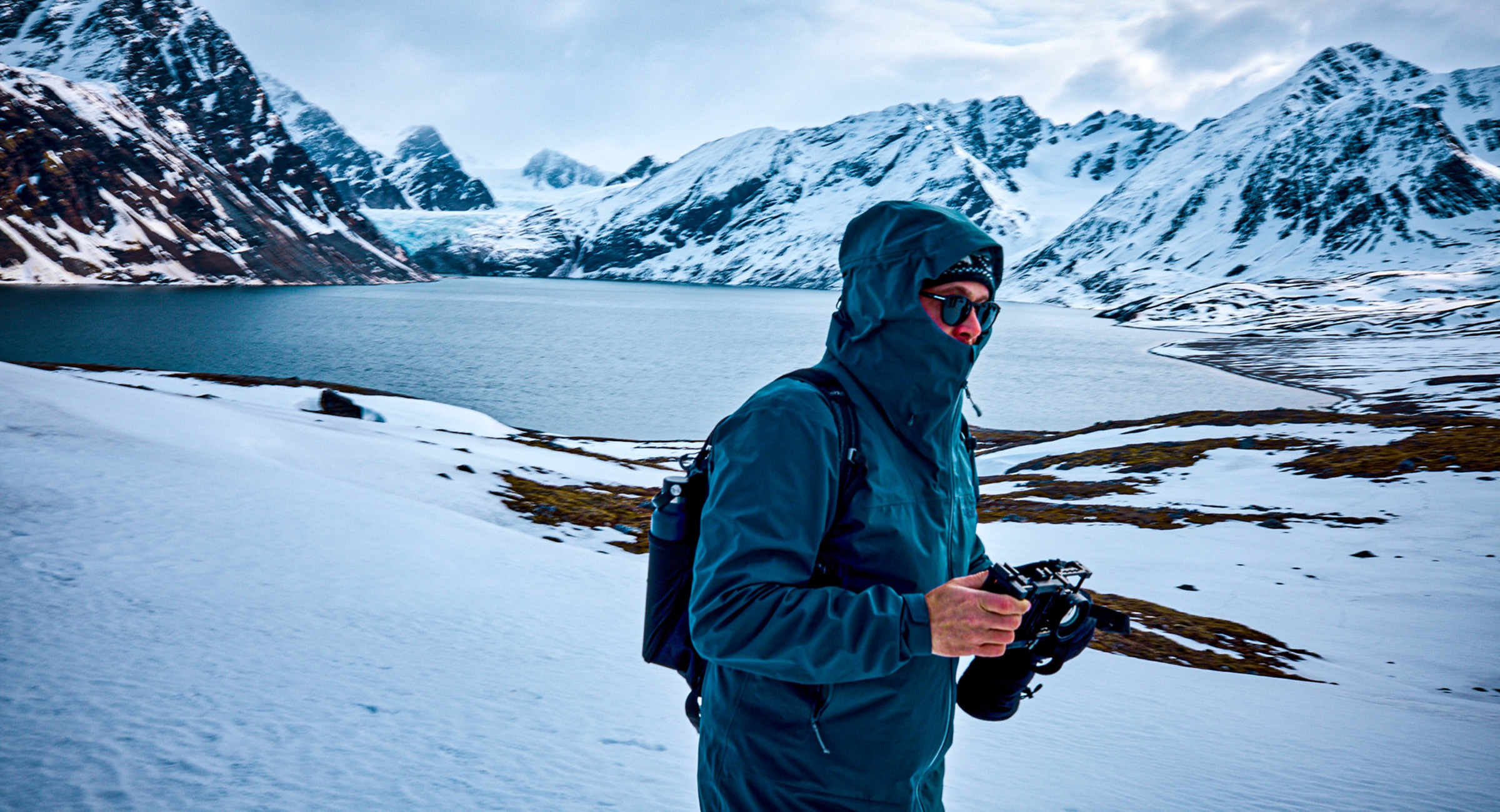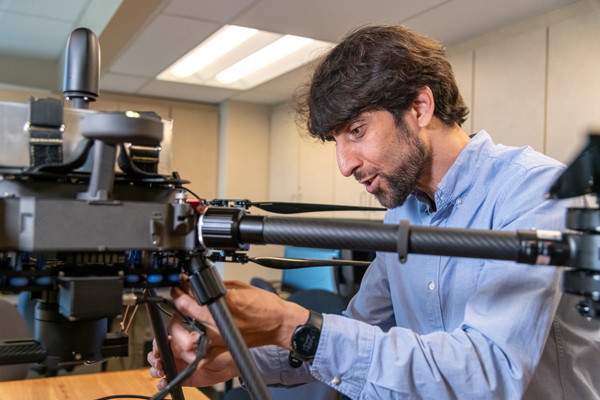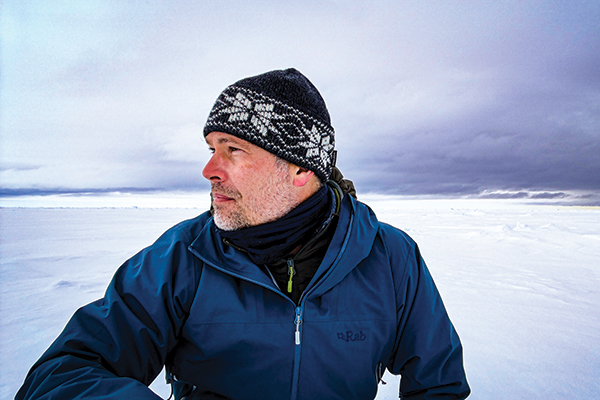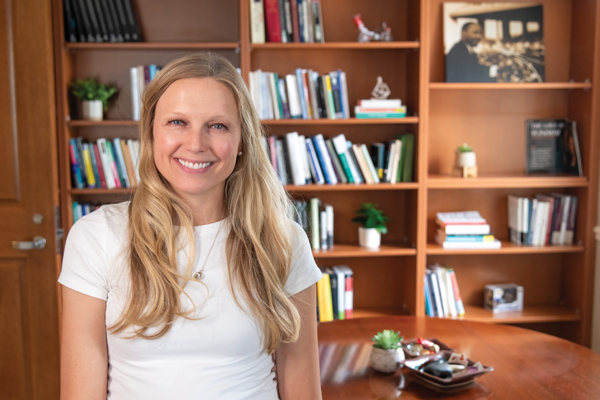
CAS faculty advance knowledge across continents and cultures
Friday, August 22, 2025
Media Contact: Elizabeth Gosney | CAS Marketing and Communications Manager | 405-744-7497 | egosney@okstate.edu
From the soil of Oklahoma’s prairie to the Arctic ice caps of the North Pole, Oklahoma State University researchers in the College of Arts and Sciences conduct transdisciplinary research covering everything from how people interact with each other to data collected from satellite imagery.
Patterns in the Prairie
Dr. Hamed Gholizadeh, associate professor in the Department of Geography, received a three-year $731,344 NASA grant for his project, “HI-GRASS - Holistic Investigation of Grassland Systems Across Scales.”

This project uses remote sensing technology — collecting imagery from satellites, airplanes and drones — along with movement ecology, landscape ecology, metagenomics and microbial ecology, to understand how and why aboveground and belowground biodiversity in grasslands is changing.
Gholizadeh is the principal investigator on this project, joined by co-PIs Drs. Benedicte Bachelot, OSU assistant professor of biology; Nicholas McMillan, assistant professor of agronomy and horticulture at the University of Nebraska-Lincoln; Ran Wang, UNL assistant professor and environmental spatial scientist; and John Gamon, UNL professor and quantitative remote sensing scientist.
“The unique aspect of this project is its transdisciplinary nature,” Gholizadeh said. “A significant outcome of this work is the novel integration of expertise in remote sensing, plant–soil interactions and herbivore–landscape interactions to develop a biodiversity monitoring system for grasslands. This project will serve as a showcase of how large-scale integration of expertise can help assess grassland health and inform better conservation strategies.”
As part of the HI-GRASS project, Gholizadeh and the team conduct large-scale field campaigns at two research sites — Joseph H. Williams Tallgrass Prairie Preserve in Oklahoma and the Barta Brothers Ranch in Nebraska — to document the variety of grassland plant species and validate remote sensing models.
But that’s just one component.
Bachelot collects soil samples to assess fungal and bacterial communities in the soil, while the team from Nebraska deploys GPS trackers on cattle to monitor their movements to understand their impact on grassland aboveground and belowground biodiversity.
All these insights will eventually be scaled up to the entire landscape using remote sensing.
Many grasslands in this part of the world are managed by prescribed fire and grazing. This project helps reveal how these management practices affect grassland biodiversity.
Turning Numbers in Art
At 79 degrees north sits the world’s northernmost post office on Norway’s island of Spitsbergen.
In this remote corner of the Svalbard archipelago, 30 people — a diverse, handpicked group of artists, scientists, sociologists and global professionals — set sail on a two-week expedition in May aboard a traditionally rigged schooner vessel to advance their careers and research.

Benjamin Murphy, assistant professor of studio art, was accepted to the highly competitive annual residency where he learned about research projects surrounding the Arctic, climate or social issues related to those areas.
Murphy, a visual artist focused on hydrological landscapes, uses data provided by scientists — whether topographical data or satellite imagery — to create visual forms. He sees it as a way to help scientists communicate their work.
“I’m looking for new ways to make the genre of landscape artworks relevant today, and to say something about what’s taking place on our planet — how it’s changing — and to start thinking about how that affects the people that live on it and occupy the space,” Murphy said.
Murphy’s work focuses on the Arctic ice cap.
“To actually go and set foot on that, that part of the world that sort of touches all the information I’m gathering and collecting, was critical,” Murphy said.
Murphy engaged with those who live and work in those remote areas to gather information he would have otherwise never accessed and connect with colleagues worldwide for future collaborations.
“One of the most important things about research is to be out there experiencing the world firsthand, cultivating relationships and building communities around the world,” he said. “Those activities not only drive research, but they also create a dialogue that, I hope, can keep the world a place where we’re able to engage with each other peacefully.”
Science of Misunderstanding
At the intersection of philosophy, psychology and neuroscience, one can find Dr. Shannon Spaulding, professor of philosophy and department head, studying social cognition. She aims to answer the basic question of “How do ordinary people understand and interact with other people?”

Every day, humans interact with family, friends, acquaintances, coworkers and strangers on the internet. Research shows that in laboratory conditions, neurotypical adults are fairly good at understanding others. However, in real life, neurotypical adults regularly misinterpret others’ intentions, thoughts and emotions in social interactions. These mistakes occur both within close circles of friends and family and with outgroup members.
However, these aren’t just simple, one-off performance mistakes; they reflect deeper, systematic patterns in how social cues are interpreted.
“I’m really interested in the mistakes we make when trying to understand other people,” Spaulding said. “What’s actually happening when we get it wrong? I’m curious about how our personal motivations and the stereotypes we bring into a social interaction shape how we interpret it — our preconceived ideas about certain situations or people create expectations, and sometimes others meet those expectations, but sometimes they don’t.”
Spaulding is leading in this area of research and was recently recognized with the prestigious Stanton Prize from the Society for Philosophy and Psychology, a preeminent organization at the intersection of those eponymous areas.
The Stanton Prize is awarded to a young scholar in philosophy or psychology who has begun making significant contributions to interdisciplinary research and has been active in SPP.
To Spaulding, receiving the award was especially affirming.
“Research is such a delayed gratification activity — you spend years working on a
project without knowing if it will go anywhere or if
the idea is a dead end,” she said. “There are so many opportunities to doubt yourself.
So being recognized for my years-long contributions to research means a lot.
“It’s especially meaningful to win the prize while representing OSU. Most recipients are from the Ivy League or prestigious private institutions and have networks of faculty and graduate students working in their areas of research at their institution. Thanks to the generous support of the philosophy department, I’ve been able to travel and deliberately build a research network extending across the U.S. and Europe. This support has allowed me to have a thriving research career. I am so grateful to be seen and supported by my peers in philosophy and psychology in this way.”
Story By: Sydney Trainor | Photos By: Jason Wallace and Provided | casnews@okstate.edu
